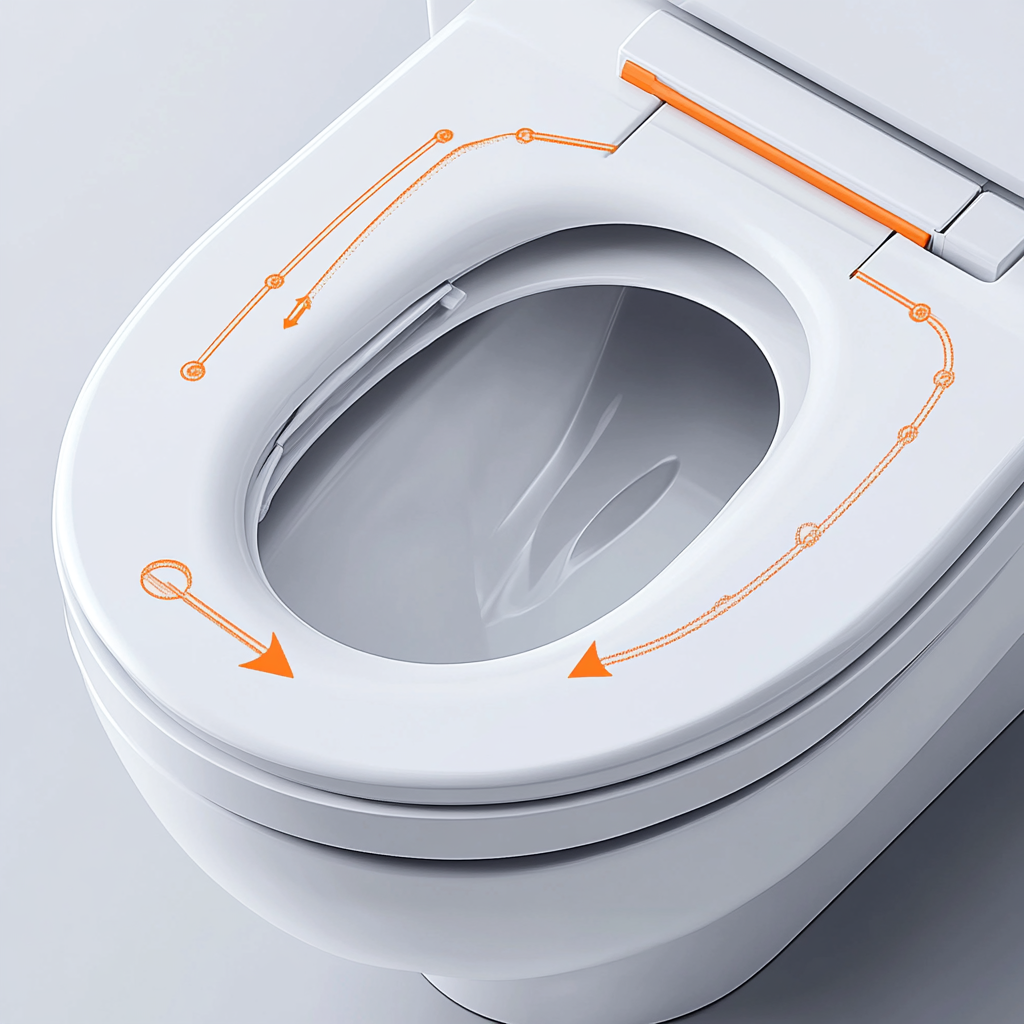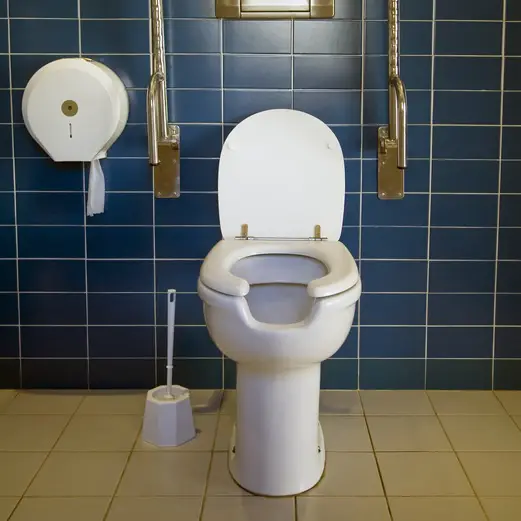If you’ve ever found yourself in a public restroom, you’ve likely encountered the enigmatic U-shaped toilet seat. This peculiar design feature has sparked countless theories and debates among curious bathroom-goers. Today, we’re diving deep to uncover the real reason behind their distinctive shape. Brace yourself for a journey through plumbing codes, hygiene concerns, and unexpected historical tidbits that will forever change the way you view your restroom experiences.
The Birth of the U-Shaped Throne
Believe it or not, the U-shaped toilet seat has been a fixture in public restrooms for nearly seven decades. Its origins can be traced back to 1955 when the American Standard National Plumbing Code first mandated the open-front design for public facilities. This revolutionary change in bathroom architecture wasn’t just a whim of eccentric plumbers – it was a calculated move to address several pressing concerns.
The primary motivation behind the U-shaped design was to improve hygiene and user comfort. By creating a gap at the front of the seat, the clever minds behind this innovation aimed to minimize contact between sensitive areas and potentially unsanitary surfaces. But the benefits didn’t stop there – this seemingly simple alteration would go on to impact everything from maintenance practices to gender-specific needs.
The Hygienic Hypothesis
One of the most compelling reasons for the U-shaped design is its role in promoting better hygiene. The open front of the seat serves as a strategic barrier between users and potential germ hotspots. For women, this gap provides easier access for wiping the perineal area without making direct contact with the seat. This thoughtful feature reduces the risk of transferring bacteria and other unwanted microorganisms, making each bathroom visit a slightly less daunting experience.
But it’s not just the ladies who benefit from this ingenious design. Men, too, reap the rewards of the U-shaped seat. The open front eliminates an area that could otherwise be contaminated with urine splashes, reducing the chances of an unpleasant seating experience. Additionally, the gap helps prevent unwanted genital contact with the seat, a feature that’s sure to be appreciated by users of all genders.
The Code Behind the Commodes

While the hygiene benefits are clear, the real driving force behind the widespread adoption of U-shaped toilet seats is rooted in plumbing codes. The Uniform Plumbing Code, which has been embraced by more than half of the U.S. population and various locations worldwide, explicitly requires the open-front design for public restrooms. This mandate has been in place since 1973, cementing the U-shaped seat’s status as a bathroom staple.
Interestingly, there is one notable exception to this rule. Public restrooms equipped with automatic toilet-seat cover dispensers are permitted to feature the more familiar O-shaped seats. This exemption highlights the primary goal of the U-shaped design: to provide a more hygienic experience in the absence of disposable seat covers. It’s a testament to the thought and consideration that goes into even the most seemingly mundane aspects of public facility design.
Debunking the Myths
Over the years, numerous theories have emerged to explain the U-shaped design of public toilet seats. Some have suggested that it’s a cost-cutting measure, using less material than a full O-shaped seat. Others have proposed that it’s easier to clean or less likely to be stolen. While these ideas may seem plausible at first glance, they don’t quite hit the mark.
The truth is that the primary motivations behind the U-shaped seat are rooted in hygiene and compliance with plumbing codes. While it’s true that these seats may be slightly cheaper to produce due to using less material, this wasn’t the driving factor behind their adoption. Similarly, while the open front might make certain aspects of cleaning easier, it’s not significantly different from maintaining a full O-shaped seat. As for theft prevention, well, let’s just say that determined seat thieves aren’t likely to be deterred by a small gap in the front.
The Home vs. Public Divide
One question that often arises is why we don’t see U-shaped toilet seats in private homes. The answer lies in the different priorities and usage patterns between public and private facilities. In a home setting, comfort and aesthetics often take precedence over the stringent hygiene requirements of high-traffic public restrooms. The continuous O-shape provides a more comfortable seating experience and complements the overall bathroom design in most homes.
Moreover, the risk of germ transmission is significantly lower in a private home where the users and cleaning habits are known. Public restrooms, on the other hand, must cater to a diverse range of users and withstand much more frequent use. The U-shaped design serves as a practical solution to the unique challenges posed by these shared spaces, balancing hygiene, durability, and ease of maintenance.
In conclusion, the real reason behind the U-shaped public toilet seat is a combination of hygiene considerations and plumbing code requirements. This unassuming bathroom fixture stands as a testament to the ongoing efforts to improve public health and sanitation. While it may not be the most glamorous topic of conversation, understanding the rationale behind this design can give us a newfound appreciation for the often-overlooked details that shape our daily experiences.

